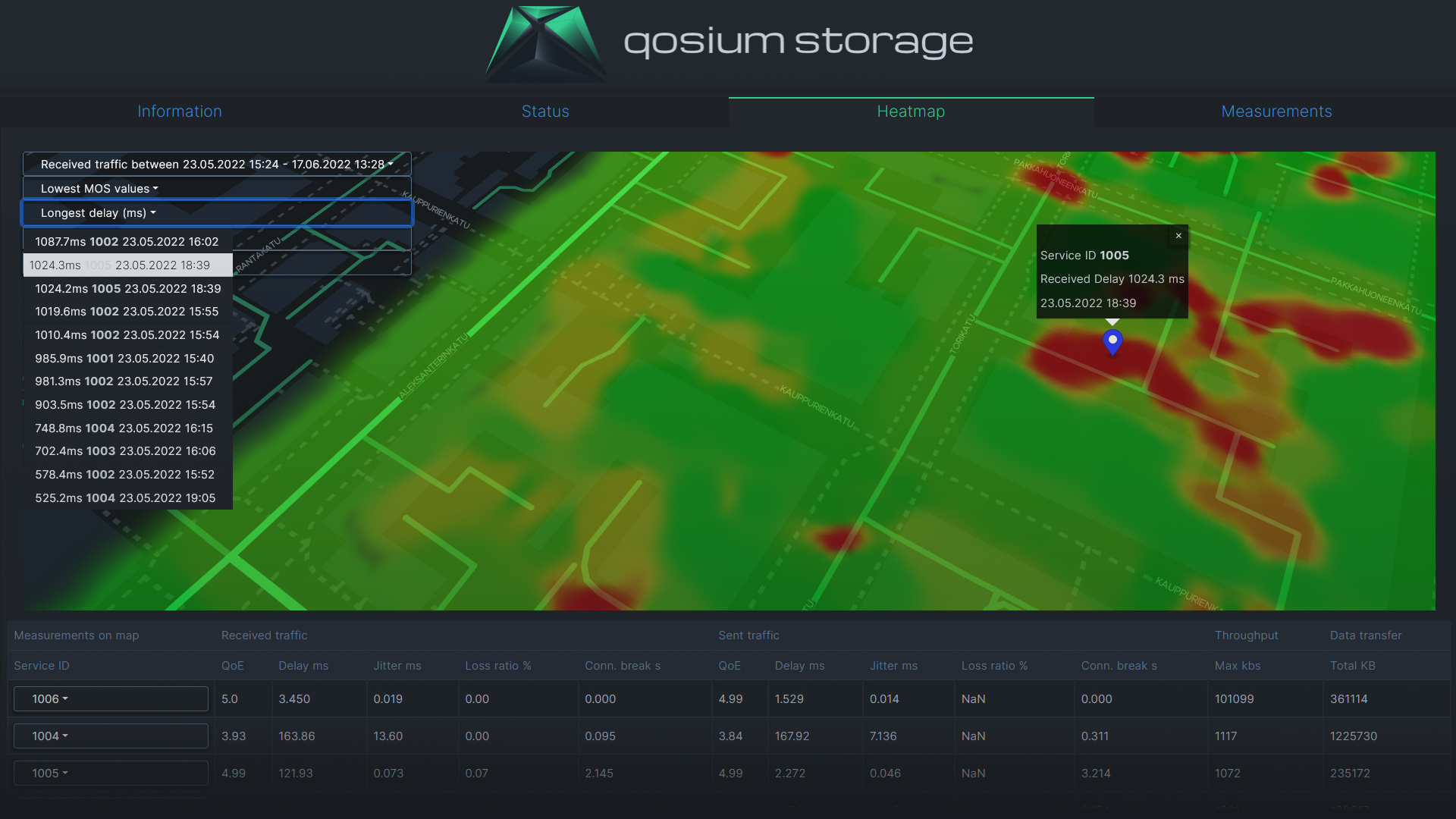
It is now possible to achieve QoS-knowledge of a whole network, diverging from traditional network monitoring. The renewed Qosium Storage contains comprehensive visualization functionalities, extending the accurate passive QoS monitoring of Qosium network-wide. The achieved QoS-knowledge tells what matters the most: how well, in reality, the network, as a whole, is performing from the perspective of applications and services using it.
September 2nd, 2022
When Qosium was born, it was a measurement tool for troubleshooting, laboratory use, and measurement campaigns. In recent years, we have been bringing more and more automatic monitoring features to extend Qosium’s use cases. The recent update was the last missing piece in the puzzle of wide-scale network monitoring to monitoring network-wide QoS. For network-wide QoS situation awareness, you find connection problem points and which devices and applications are affected without delay and overwhelming troubleshooting.
Qosium Storage results server software has been in Kaitotek’s product portfolio long time. Until today, it has been chiefly a depository of measurement results. As a result of the product renewal, comprehensive visualization and reporting functionalities are available, making Qosium suitable for network-wide automatic monitoring. In addition to monitoring network paths, it is possible to monitor individual applications and services in networks, even flow basis. The results are delivered to Qosium Storage, yielding users a complete QoS status of the monitored network via a web user interface. The automatic continuous tracking instantly reveals connectivity problems, which alerts can enhance.
The new Qosium Storage has different options to integrate and use the results with external applications. Storage’s RESTRepresentational State Transfer
A software architectural style that was created to guide the design and development of the architecture for the World Wide Web. API provides an easy way to accomplish that, providing access to summaries, tailored statistics, and raw data. Many REST calls are already available, but it is possible to define new calls together with Kaitotek to get the necessary information. Another way of integration is direct database access, the most efficient way to fetch raw data. Qosium Storage software can run in a cloud, but it is often installed directly on the customer’s closed network, where it serves its purpose most efficiently.
Regarding Qosium Storage’s visualization capabilities, the most imposing part is the heatmap. Qosium Scope’s heatmap is similar, but while it visualizes a single measurement at a time, Qosium Storage’s heatmap handles the whole monitored environment, also offering drill-down possibilities. When problems occur, they can be pinpointed immediately, including devices affected, expediting troubleshooting considerably. In contrast, occasional QoS problems are tough to catch with traditional network monitoring solutions. The heatmap is naturally at its best when monitoring wireless networks, but nothing prevents using it for fixed networks.
Qosium Storage makes Qosium’s automatic monitoring suite comprehensive. Now Qosium is suitable for tracking the performance of whole networks, and the benefits are emphasized, especially in mission-critical environments. Read more about Qosium’s automatic monitoring here.
